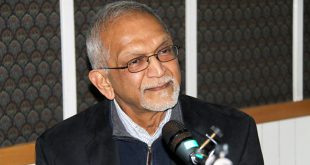This book marks a welcome shift in research from the kinetic to the communicative evolution of this complex political organisation. It analyses forensically the way Hizbullah shapes its discourses at both strategic and tactical levels. Penetrative and revealing, this book builds on the authors’ earlier work on the role of political imagery in the Middle East.
Hizbullah is not only a leading political actor in Lebanon and a dynamic force in the Middle East, but it is also distinguished by a sophisticated communication strategy. From relatively humble beginnings in the 1980s, Hizbullah’s political clout and its public perception have followed an upward trajectory, thanks to a political programme that blends military, social, economic and religious elements and adapts to changes in its environment. Its communication strategy is similarly adaptive, supporting the group’s political objectives. Hizbullah’s target audience has expanded to a regional and global viewership. Its projected identity, too, shifted from an Islamist resistance party opposed to Israel’s presence in Lebanon to a key player within the Lebanese state. At the same time, Hizbullah’s image has retained fixed features, including its image as an ally of Iran; its role as a resistance group (to Israel); and its original base as a religious party representative of the Lebanese Shiites. The authors of this book address how Hizbullah uses image, language and its charismatic leader, Hassan Nasrallah, to legitimise its political aims and ideology and appeal to different target groups.
About the Author
Dina Matar is Associate Head, Centre for Media Studies at SOAS, University of London. She is the author of What it Means to be Palestinian and co-author of The Hizbullah Phenomenon: Politics and Communication.
Atef Alshaer is a lecturer in Arabic Language and Culture at the University of Westminster. He has several publications on the Arab world in the fields of language, literature and politics. He was educated at Birzeit University in Palestine and the School of Oriental and African Studies, University of London, where he obtained his PhD and taught for a number of years. He is the author of Poetry and Politics in the Modern Arab World, and co-author of The Hizbullah Phenomenon: Politics and Communication.
Lina Khatib is the Director of the Carnegie Middle East Center in Beirut. She is the author of Image Politics in the Middle East (2013).
Table of Contents
Introduction: Hizbullah’s Communication and Political Evolution — Dina Matar and Lina Khatib
- Hizbullah’s Political Strategy — Lina Khatib
- From the Invasion to the Liberation: Communicating Hizbullah’s Political Repertoire, 1982–2000 — Dina Matar and Atef Alshaer with Lina Khatib
- Hizbullah in the Twenty-First Century: The Struggle for Political Survival, 2000–12 — Lina Khatib
4.The Poetry of Hizbullah — Atef Alshaer
- Hassan Nasrallah: The Central Actor in Hizbullah’s Political Communication Strategies — Dina Matar
Conclusion: Hizbullah at a Crossroads— Lina Khatib and Dina Matar
Bibliographic Information
Title: The Hizbullah Phenomenon: Politics and Communication
Author(s): Dina Matar, Atef Alshaer, and Lina Khatib
Publisher: C Hurst & Co Publishers Ltd
Language: English
Length: 256pages
ISBN: 978-1849043359
Pub. Date: August 15, 2014
 Ijtihad Network Being Wise and Faithful Muslim in the Contemporary World
Ijtihad Network Being Wise and Faithful Muslim in the Contemporary World
